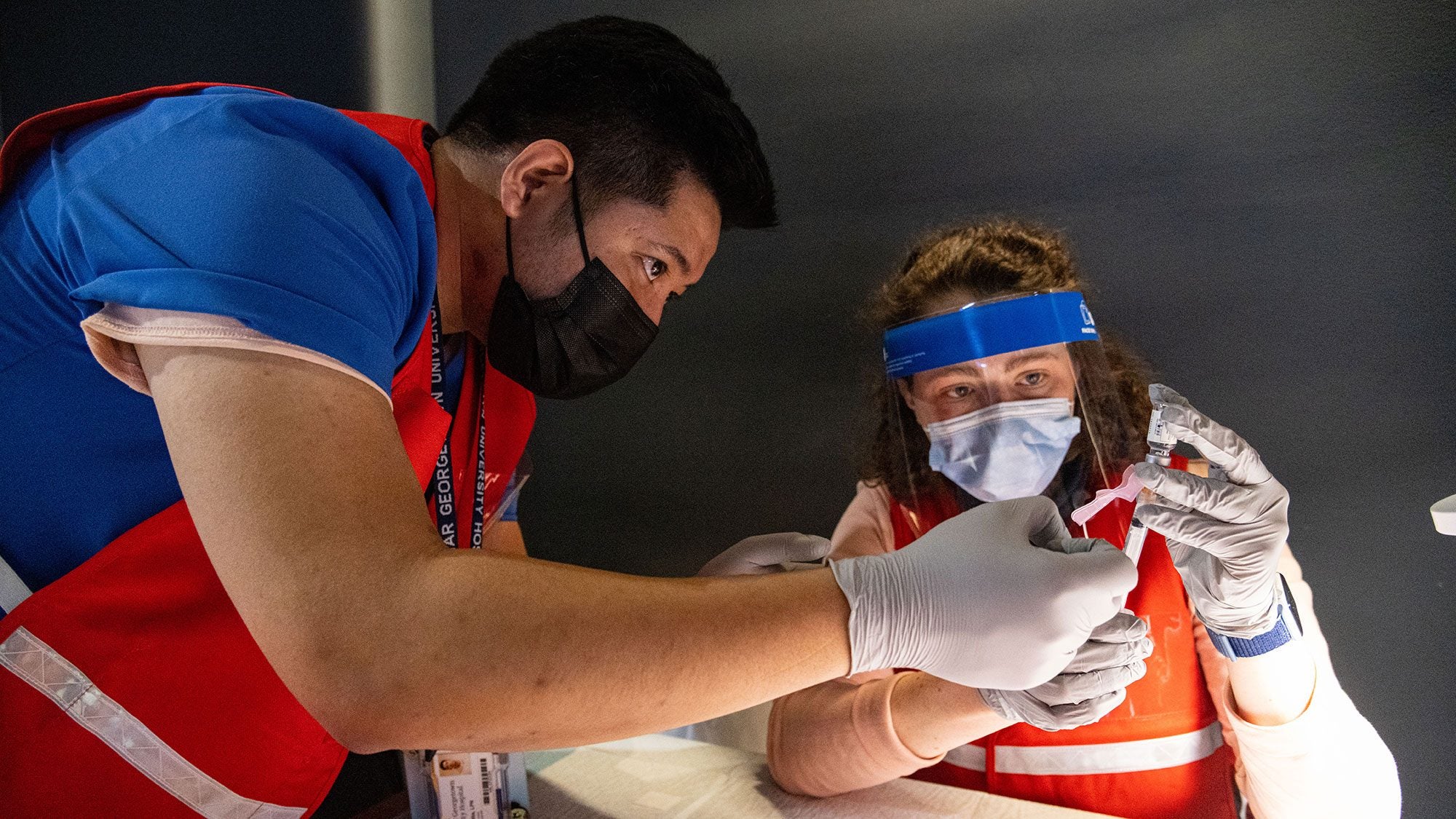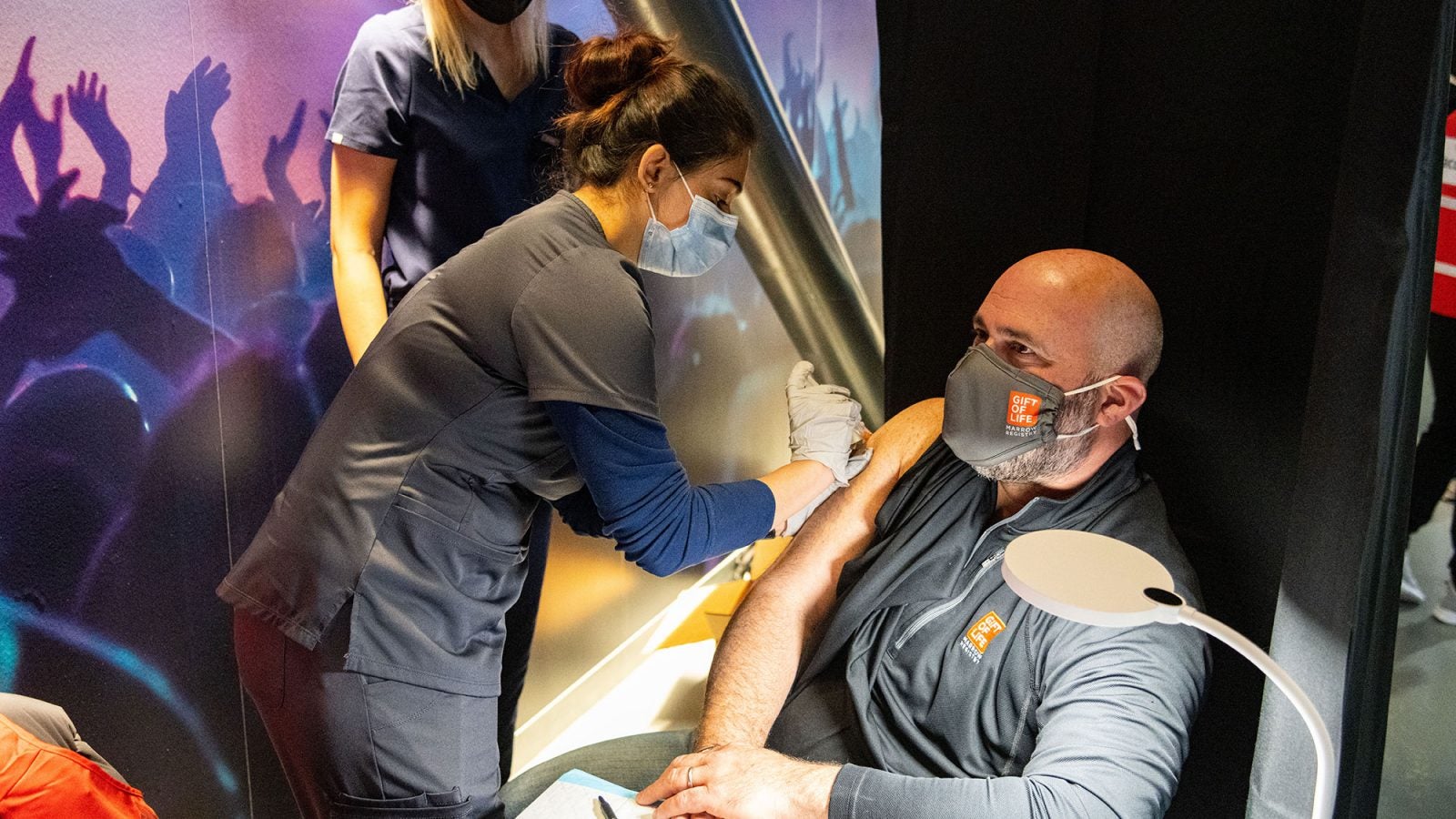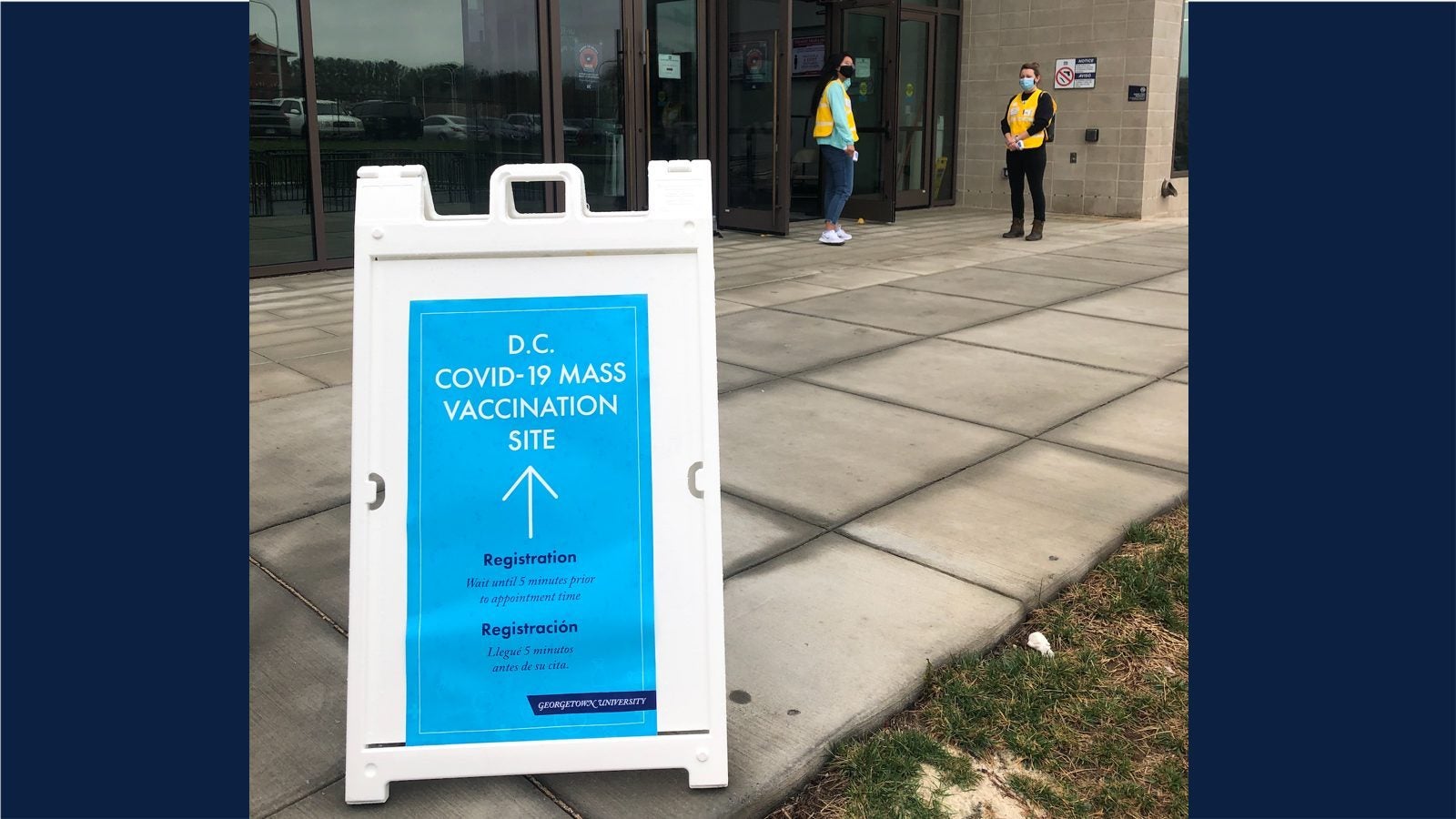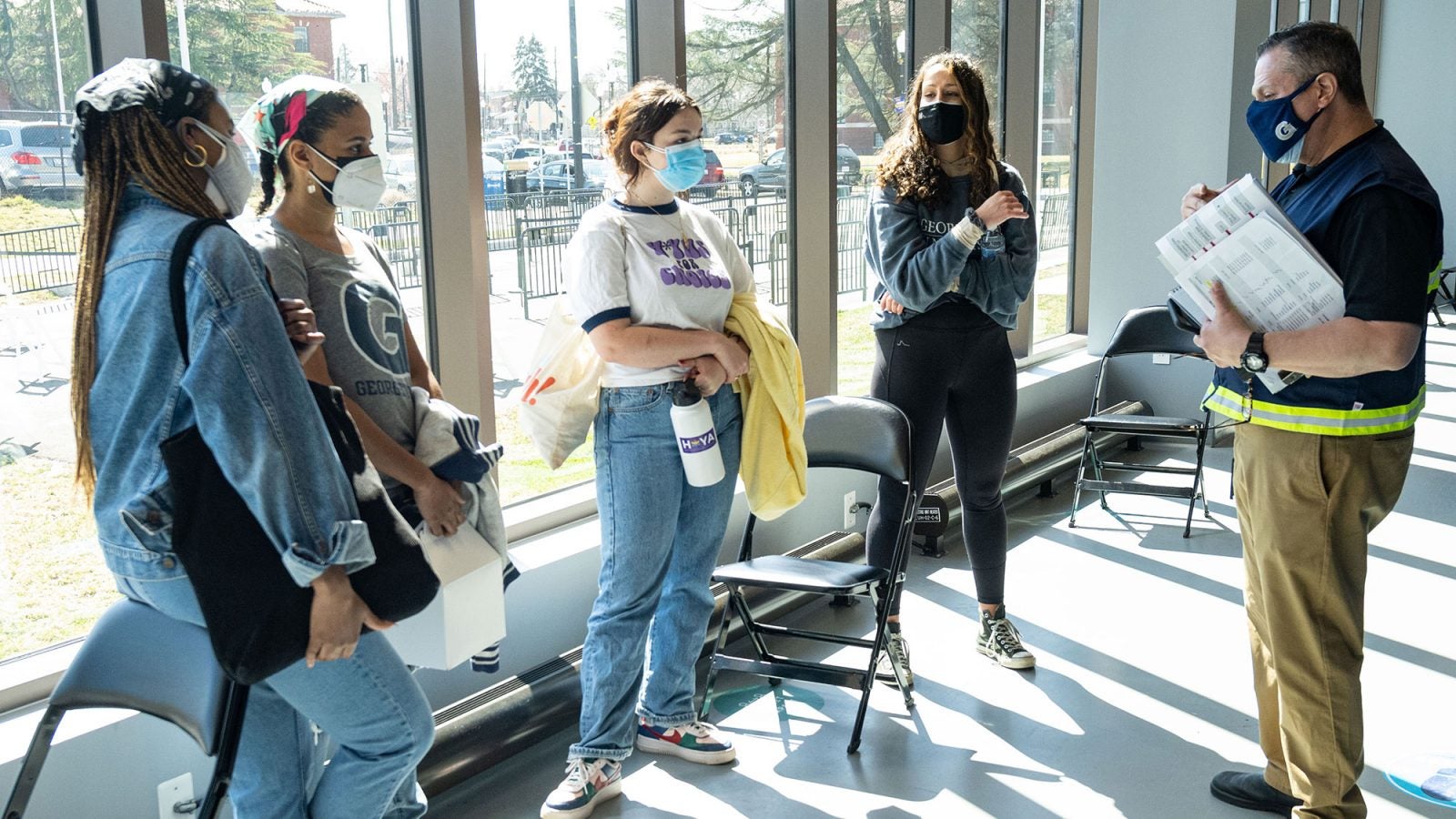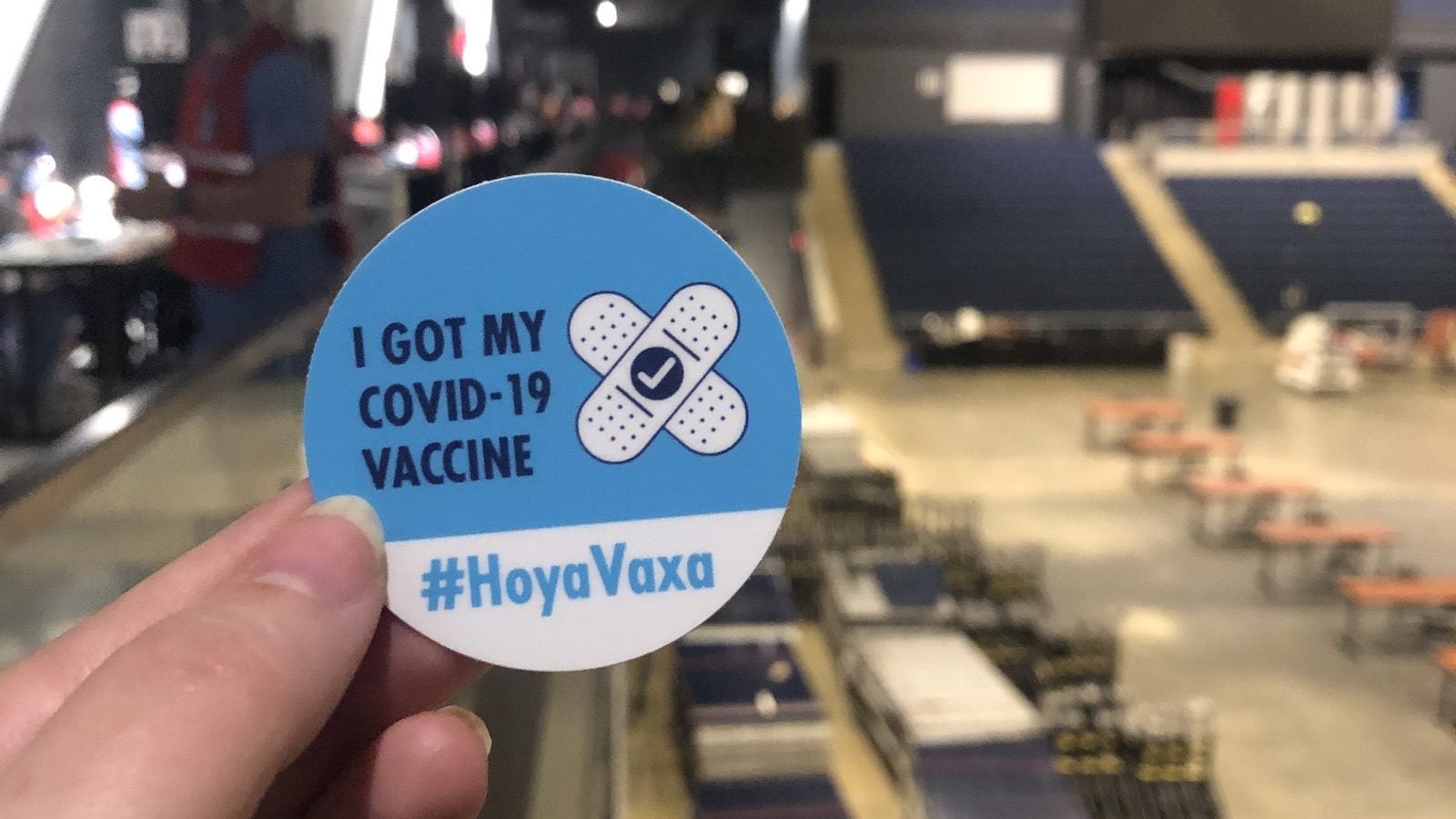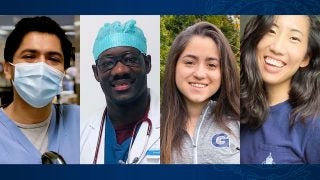A Volunteer Effort
Already this year, more than 150 trained clinical learners have stepped up to help the university’s clinical partner, MedStar Health, with its vaccination rollout.
“It takes a lot of teamwork to pull off a clinic like this, and we could not have done it without the student volunteers – they were the key ingredient in our success,” says Nellie Darling (NHS’11, M’21), an international health alumna and fourth-year medical student at Georgetown.
Darling, who served as the medical school student organizer for the mass vaccination site, says she was glad to have an impact on the community.
“Our success is not just defined by how many doses we administered, but by how well we served our community. I lost track of how many patients asked me, ‘When is the next one? I want to bring my grandmother/father/mother/etc. to get their shot at the next clinic,’ ” Darling adds. “Considering our clinic site was located in Ward 8 in Southeast DC – one of the communities hardest-hit by COVID-19 in the District, statements like that speak volumes. These vaccines not only help us reach herd immunity, but they give our community hope. This is how we turn the tide of this pandemic – one shot at a time.”
